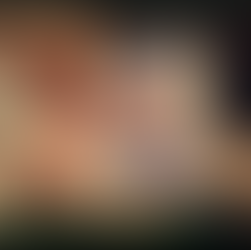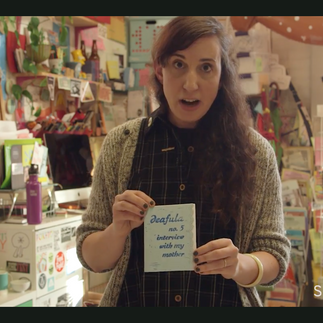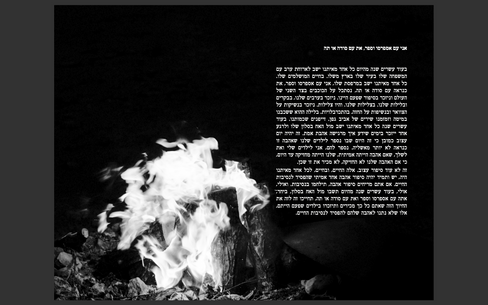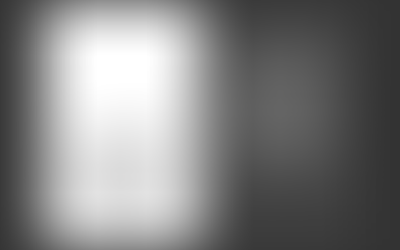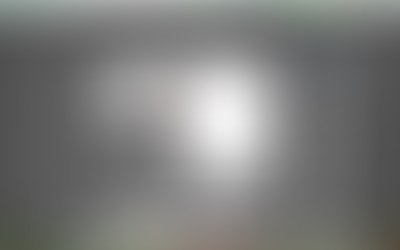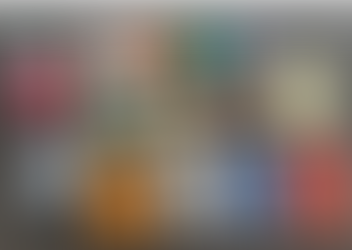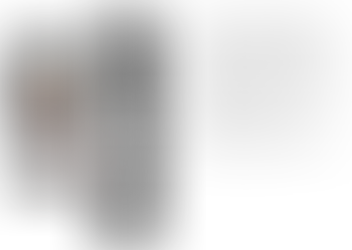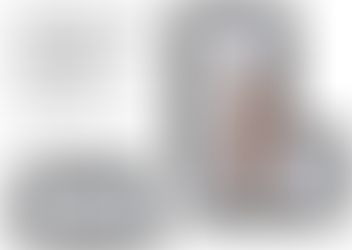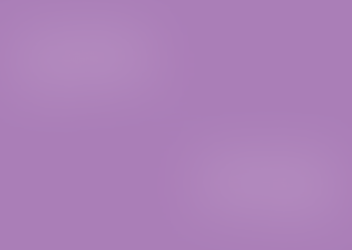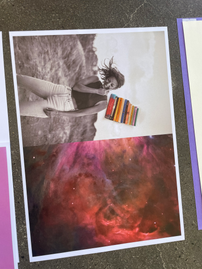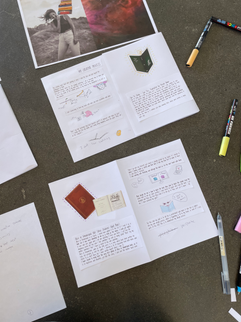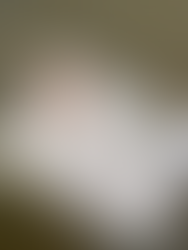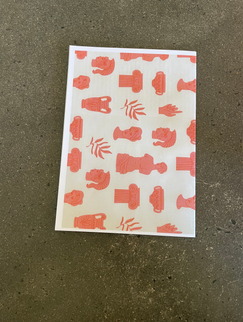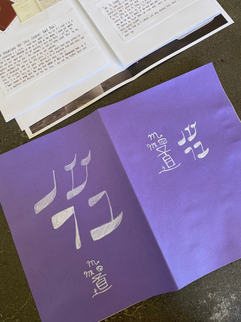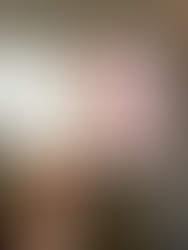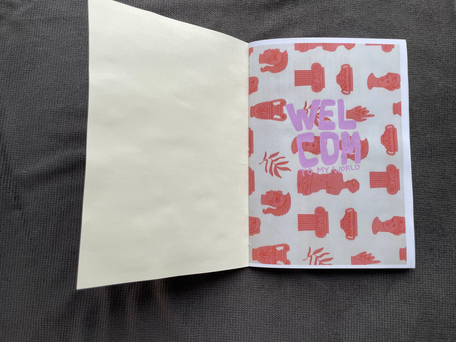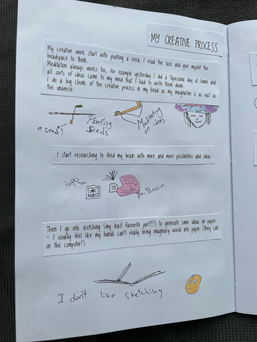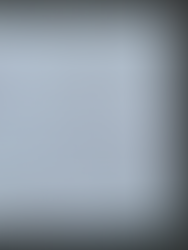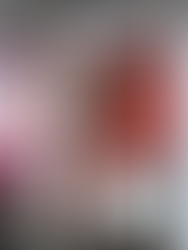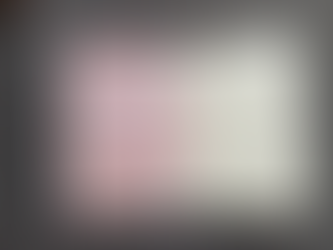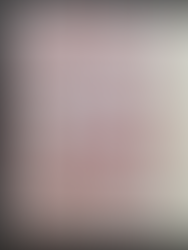Your first assignment asks you to create a small publication or fanzine based on your interest in books and their design. It allows you to introduce yourself, and your interests in book design, so that your tutor can get to know you and your work better.
Your fanzine can be digitally printed, photocopied or handmade. Aim to design a sixteen-page simple folded and stapled A5 fanzine, though you can add more pages, or change the scale, if you want to. You can use any medium or materials to generate your artwork and make your publication. You may want to work much larger and reduce your artwork for the fanzine. While visually it doesn’t have to look like a punk fanzine, try and embrace the lo-fi ‘cut and paste’ attitude, so you’re making the work relatively quickly and not too preciously. Be creative with this task both in terms of the content and how you choose to present it, this could extend to challenging some of the assumptions about what a fanzine should look like, or how it’s made.
Use the work you have produced so far, in the earlier exercises, as a starting point for your content. Not all of this material needs to be included in your fanzine. You may want to develop new visual ideas, or add to the work you have already produced.
As a guide, your fanzine should contain the following elements:
● Introduce yourself - say something about your relationship with books. Why are they important to you? Communicate this through writing and images.
● Your creative process - how do you like to work creatively, what sort of process do you follow to research and generate ideas, and what are your preferred mediums to work in. Say something about you as a creative practitioner and your approach. Show your approach to book design through your design decisions and the hands-on sense of immediacy and energy that is an attribute of fanzine design.
● Looking at books - present the most interesting books you’ve looked at, or those you find influential as a reader, designer or both? Present a selection of books, or focus on one particular example to present in more depth. Think about how you can present these books, and your reflections, in visually engaging ways.
● Global influences - which books with a wide reaching scientific, artistic, historical, political, geographic, fictional, poetic, religious or other impact have you chosen. Present them along with a brief rationale as to why, or how these books have affected you personally. Again, can your designs echo the ideas in these books in anyway?
● The future of the book - where do you see the book heading? Show and tell. Try and summarise your thinking into a series of short statements, quotations, images or ideas. Be creative in how you approach this.
● How can you creatively respond to one or more of following book related sayings - Bookworms, A closed/open book, The oldest trick in the book, You can’t judge a book by its cover, In someone’s good/bad books, or, by the book. Use your fanzine to present your ideas. Can any of your images, text or ideas also feed into your cover designs?
Using your learning log
Keep notes to accompany the making of the publication in your learning log. These notes could cover why you decided to portray what you did, what you included and what you omitted. See it as a way to document and reflect on your creative design process.
Remember that this is an opportunity to experiment with your ideas, so document your creative process, the various stages of your work, and any ideas you rejected along the way. Aim to do this visually by photographing, scanning or taking screenshots of your work in progress and sharing them in your learning log.
As your first book, there’s room to make mistakes, take creative risks and enjoy the creative process, so don’t worry too much about getting it ‘right’. If your visual research takes you away from the above categories, that’s fine, afterall they are just prompts to start the dialogue about your interest in book design.
Submitting your work
Your introductory talk with your tutor and course introduction should give you a clear idea of how, and when, you can submit your work to your tutor for feedback. While you are waiting for your feedback, start work on the next part of the course, in particular, undertaking any reading that is required.
To start this assignment I decided to do another Skillshare course in order to learn a bit more
Here are few screenshots from the course I took for inspiration
I decided to start the task with separating each part of the zine in order to be organised.
I have decided as well to create each part as a 'spread' over 2 pages, like in many magazines, and prepare for each 'spread' a copy text, ideas, and a list of what I need to prepare.
As I will make this zine by hand I want to make sure I am sending everything I need to the local print-house so I can pick it up and put it all together.
I think I will make the cover using a cardboard paper, and therefor the first page will be actually just white and not facing another paper. So I thought to print the printers pairs of page 2 & 15 some kind of cool image/ pattern, and draw on it "welcome to my world" on page 2 and "see you later" on page 15.
● Spread 1 - Introduce yourself - say something about your relationship with books. Why are they important to you? Communicate this through writing and images.
Copy -
"Sometimes I like to get lost in a good old fashioned book store. To explore all areas I am interested about - Photography and Design, Philosophy, Spirituality, Poetry, Therapy and many more. To find a hidden gem in a book store after at least an hour of a seek, is everything.
Hi, my name is Inbar (like IN-side the BAR), usually it is easier to present myself as Amber. I am making designs since I was 14, I love books (even though I am more thrilled by their designs rather have the actual time to read them). I am a very busy human so I do prefer listening to audiobooks, as I am mainly listening to philosophy and therapy related books, but I love having and reading books which you can open the book on whichever page you like and you will find something short and sweet to read. I also think books make good decorations, so I love using the books I do read and have as a decor piece in my living space.
I have recently finished designing a creative book for print (only the interiors), with poetry and photography, and I am pretty proud of it!
I think books are important as vessels to carry information to generations to come, I currently have a special book about the integration of Chines Medicine and Western Astrology and it was written in 1986! Same as other books such a The Yoga Sutras of Patanjali and Bhagavad Gita which were written ages and ages ago."
Ideas -
A picture of myself with books (maybe books on my head?), a page with picture and page with image, maybe even using a picture which can spread on both pages? (white wall as background for text)
After trying to execute an image of myself with a white background and books on my head I decided it will be actually way better and interesting to take an exiting photo of myself and a stack of books and collage it together!
What I need to arrange -
- a photo of myself (A5)
- a photo of a stack of books I have at home (small scale)
- A couple of spreads from the book I've designed (on a small scale)
- Photos of the books I have mentioned above (on a small scale)
● Spread 2 - Your creative process - how do you like to work creatively, what sort of process do you follow to research and generate ideas, and what are your preferred mediums to work in. Say something about you as a creative practitioner and your approach. Show your approach to book design through your design decisions and the hands-on sense of immediacy and energy that is an attribute of fanzine design.
Copy -
"MY CREATIVE PROCESS
My creative work start with planting a seed, I read the task and give myself the headspace to think.
Meditation always works too, for example yesterday I did a Vipassana day at home and all sorts of ideas came to my mind that I had to write them down.
I do a big chunk of the creative process in my head as my imagination is as vast as the universe.
I start researching to feed my brain with more and more possibilities and ideas.
Then I go into sketching (my least favourite part!!!) to generate some ideas on paper - I usually feel like my hands can't really bring imaginary world into paper (they can on the computer!).
Then I go onto my favourite part which is playing around on my laptop! if I decide to draw I usually create a sketch and then take it into my iPad first in order to trace it, and then to illustrator.
I love working with Photoshop and inDesign the most as I'm the most fluent with them.
Book design for me is how to make the book flow, how to make the reader read the whole book in one go (and recently I read stories of people who read the book I just designed and they say how they read it in one go or they can't put it down - for me, I have achieved my goal!).
For this zine my goal is to not be a perfectionist and make it look like a glance into my own design process, which is happening a lot in my head, so even if I cross parts of this text, this is to demonstrate my design process."
Ideas -
Drawing the process like a comics? (so I marked areas on the text that I can draw)
Make the spread look like my design process (sketchbook, not prefect, cross letters 'mistakes')
What I need to arrange -
Just draw and write on the spread.
maybe a colored paper?
● Spread 3 - Looking at books - present the most interesting books you’ve looked at, or those you find influential as a reader, designer or both? Present a selection of books, or focus on one particular example to present in more depth. Think about how you can present these books, and your reflections, in visually engaging ways.
Ideas -
Initially I thought that for this spread I will print all my favourite books in different sizes and cut and paste them and stick them into the spread like a massive collage.
But then I realised I need to also write some reflections, so I had an idea to print my influential books from the previous exercise and write short comments and reflections on them by hand using arrows and cut and pasting the images of the books onto my page.
What I need to arrange -
Pictures of all my influential books in different sizes.
● Spread 4 - Global influences - which books with a wide reaching scientific, artistic, historical, political, geographic, fictional, poetic, religious or other impact have you chosen. Present them along with a brief rationale as to why, or how these books have affected you personally. Again, can your designs echo the ideas in these books in anyway?
Copy -
"Tao Te Ching - Lao Tzu, Translated by Nissim Amon
Tao Te Ching was a book I'm pretty sure I picked up when I was roughly 19, and started to practice yoga. I'm pretty sure my teacher was reading texts from this book in classes and I asked her what was the book and immediately went to buy it.
Tao Te Ching or Dao De Ching is a philosophy book traditionally credited to the 6th-century BC sage lauzi, by Lao Tzu (which translate to old wise man, some people say lay tau was a bunch of old wise men and not specifically one person) translated to Hebrew by Nissim Amon (an israeli monk, which came back from the monastery to teach eastern wisdom).
I love this book as it contains such deep meaning texts, which were written so many years ago."
"Alice in Wonderland 1865 (Wise Children/ Adult Book)
Alice in Wonderland is a classic, i would have added it to the list if I read it as a book but it was more influential on me as a child as the movie, I could just watch it over and over again and I still am watching it here and there, I just love the imaginary world she has and I feel sometimes (as well as being called "Alice" by my mother sometimes) that I have a world of my own sometimes.
Alice in Wonderland, same as the little price, is a book which have been written for kids, but actually as well for adults. I derived a lot of inspiration from both books and stories to a short fairy tail I have written myself when I was 21.
I have chosen to bring here the very first edition of Alice in Wonderland book, as it is so mysterious and beautiful, just like the story. I also love the leather hard cover."
Ideas -
Choose 2 books (so I will have enough space to write and create a frame)
Make a frame to each book that will echo the ideas in these books.
What I need to arrange -
Print 2 books covers / interiors / versions (small scale that can be cut and pasted)
● Spread 5 - The future of the book - where do you see the book heading? Show and tell. Try and summarise your thinking into a series of short statements, quotations, images or ideas. Be creative in how you approach this.
Copy -
"I believe that a core purpose of a physical book is to record our existence and to leave it behind on a shelf / library / home for generations down the road, to understand where they have come from, that people have gone through the same things that they are going through, and it is like a dialog that you have with the author." - Chip Kidd (my number one inspiration when it comes to book design).
"I think the printed book will stay, and other formats will support our everyday fast paced lives. I think the readers and consumers will choose where they source their books, and which formats, but still keep printed books in their homes (at least one). I think designers wouldn't have to adjust too much, as the main softwares for creating books (such as indesign for interior, and photoshop for covers) would probably stay the same, just will have print based measurements or not for online. I think for audiobooks the cover matters a lot as just like buying a book by it's cover in a book store, selecting your book online for audio version will be based on the design as well."
Ideas -
Cut and paste a background from a magazine.
Use torn paper for the quotation and statements.
Find Images to use and cut and paste
What I need to arrange -
Find Images to use and cut and paste
Find and cut a background from a magazine
*As I decided to use cardboard paper for the cover and use one spread of pattern so the first and last page wouldn't stand alone, I have realized I am running out of spreads, but then, an idea from the first Skillshare course I did came to my head, why wont I use an extra spread, gluing onto page 11 and that way I have an extended spread which is "hidden" and that way as well doesn't hard my flow which I have already created with spreads along 16 pages.
● Spread 6 - How can you creatively respond to one or more of following book related sayings - Bookworms, A closed/open book, The oldest trick in the book, You can’t judge a book by its cover, In someone’s good/bad books, or, by the book. Use your fanzine to present your ideas. Can any of your images, text or ideas also feed into your cover designs?
The most creative way I can respond to the phrase "the oldest trick in the book" while keeping this zine in the theme of presenting myself, is - using the 'oldest trick in the book' to present myself! - Astrology!
I have spent quite a bit on this topic exploring the different aspect and how can I take this phrase 'the oldest trick in the book' to an interesting direction!
Astrology is a very profound way for one to understand him/herself and his/hers purpose in this planet and lifetime. Ever since I have dove into this realm I find it more and more accurate and true.
So in order to understand someone's personality - the most important aspects are the sun sign, the moon sign and the rising sign in their natal chart (natal chart is basically a snapshot of the sky of when one has born).
I am a -
Scorpio Sun
Cancer Moon
and Virgo Rising.
*Define each sign into a couple of sentences.
I think it can be a very cool way to use these signs in the cover, as "codes" for introducing myself.
Need to arrange -
Galactic image to act as the background over A4 which can be cut and pasted into the spread.
Draw the star signs.
use cut paper to create the background for text (maybe purple paper).
I was looking in the news agency for a cool magazine that I would be able to cut and paste from but I couldn't find anything exciting, so I decided to print an image from Pinterest.
A couple of images I have found on Pinterest
Cover spread -
I think the best idea will be creating a code based cover which will use 'codes' from the inside on the cover.
for example, the star signs drawing, the Chinese lettering symbol of 'tao te ching' and names of the other books in their original languages.
As well as writing my name in Hebrew, as another 'code'.
Using a thicker paper can be cool too, and maybe even colored one.
creating a bigger image which are built from different elements.
Here is a reference from my new planner for 2022 -

I have started working on indesign just to get my head around the paginations, and also to get the right prints on the paper I will use. I have figured our according to my mockup that spread 1 (the pattern) and spread 2 (half my photo half the galactic image) need to be back to back on print.
the next back to back can be clear paper but one side need to have half of the galactic image.
then the rest will be on white paper and I can just cut and paste text and images.
As I am also running out of time, and for the sake of things being a tiny bit more neat, I decided to print most of the text so I can cut and paste it into the paper and create a play between the text and images.
some of the pages I will still use my own text but it will be a lot easier and quicker to print.
Working on the spreads and preparing the documents for print
First I have orgenized my Mockup, giving myself the page numbers so I know the printers pairs and also wiritng some comments to myself including a sketch for some ideas (grids and placements or just thumbnail like ideas).
Document for print
screenshots
The document for print, first two spreads need to be printed back to back
Working on paring prints and using my mockup as a guide, working on each spread at a time and giving myself a creative space to just be creative.
Final Zine
reflection
I actually really enjoyed doing this zine. Initially I wasn't so keen on this task, but I loved how freeing zines can be, as I have mentioned earlier, I am a perfectionist (a part of having my ascendant in virgo in astrology), and doing creating this zine was just a pure pleasure once I have worked out all the printers pairs and got everything printed to start playing around. I am sure this wouldn't be my last zine.









